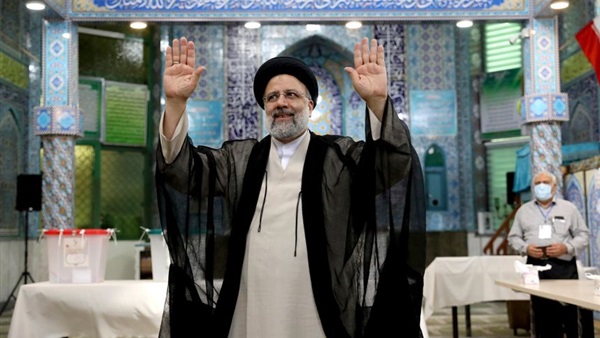Water Protests in Iran Test Country’s Leaders

Weekslong Iranian protests over water scarcity present an
early test for incoming president Ebrahim Raisi, who takes office next week
amid mounting challenges including a grinding economic crisis and stalled
nuclear negotiations with the West.
The protests, which began nearly two weeks ago in the
oil-rich southwestern province of Khuzestan, center on accusations that the
Iranian government is diverting water to drill for oil, service other provinces
and drive the area’s ethnic Arabs off the land. Protesters have shouted “We are
thirsty,” while some chanted against Supreme Leader Ayatollah Ali Khamenei and
the Islamic Republic.
Iran on Tuesday said it had arrested a number of people
on its western border. It accused the culprits of smuggling rifles, pistols and
grenades to be used in urban riots and “terrorist operations,” according to
state television.
At the same time, Iran’s leaders have struck a more
conciliatory tone with those involved in the water protests. Mr. Khamenei and
President Hassan Rouhani have both recognized Khuzestan’s water-shortage
problem, and said Iranians have a legal right to protest.
“It is really
painful for us to see that despite the loyal people living in that province,
and with all the abundant natural resources in that area, and with all the
factories working there, the people have reached a point where they are
dissatisfied with the shortage of water and sewage system,” Mr. Khamenei said
in a speech Friday.
At least eight protesters have been killed in seven
different cities, according to Amnesty International.
State media has confirmed that four people have died,
blaming the deaths on “thugs” and “rioters.”
While Iran has seen regular protests over the past
half-decade, the current unrest in Khuzestan reflects the depth of challenges
awaiting Mr. Raisi as he prepares to take office after his inauguration Aug. 5.
A deep economic crisis has pushed many Iranian families
into poverty and diminished their purchasing power by slashing the value of the
currency. The economic hardship is worsened by American sanctions imposed by
former President Trump after he withdrew from a 2015 international nuclear pact
with Iran. Negotiations with the Biden administration to resurrect the deal are
at an impasse.
The incoming president also faces regional tensions,
especially over the possible revival of the nuclear deal, which Israel and
Saudi Arabia have opposed. Iran has in the past two years suffered several
devastating attacks on its nuclear facilities, which it blames on Israel.
Israel says it doesn’t comment on such allegations.
At home, Mr. Raisi faces a crisis of confidence after
winning an election that was widely boycotted by Iranians unhappy about the
nation’s governance. A longtime top legal official, Mr. Raisi is mostly known
for his heavy-handed approach to political dissent.
Ebrahim Raisi’s election as Iran’s next president will pose
new challenges to the Biden administration, as it looks not just to revive the
nuclear deal, but to lengthen and strengthen the scope of an agreement. WSJ’s
Gerald F. Seib explains. Photo illustration: Emma Scott
Khuzestan’s woes are symptomatic of deeper predicaments
facing Iran and the Middle East. The water shortage that sparked the protests
is partly due to climate change, drought and sandstorms, but years of
government mismanagement has amplified the province’s troubles and undercut
livelihoods of its people.
Environmental experts have for decades warned that
development projects in Khuzestan were causing environmental harm that would
lead to water shortage. The construction of hydroelectric dams and water
transfers to neighboring provinces have parched Khuzestan, and irrigation
schemes have fed agriculture without supplying the area’s wetlands and wider
ecosystem.
Khuzestan lawmaker Mojtaba Youssefi last week told local
media that more than 700 villages in the province lacked drinking water and that
farmers saw their livestock dying of thirst.
The protests in Khuzestan add to simmering unrest across
Iran, which has suffered lengthy power cuts this month that the government has
blamed on heat.
Oil and petrochemical workers from approximately 100
companies have been on strike for most of July over low wages and insecure
employment conditions for those with temporary contracts.
Khuzestan is also home to an ethnic Arab minority and
separatist groups. In 2018, gunmen killed 25 people in an attack on a military
parade in Khuzestan’s capital Ahvaz. Iran accused Saudi Arabia and the United
Arab Emirates of funding the attackers.
In the current unrest over water, activists in the area
say authorities have responded with violence and by cutting internet access—a
tactic that has become routine. Iranian Foreign Ministry spokesman Saeed
Khatibzadeh on Tuesday partly blamed the water shortage on U.S. sanctions,
which he said prevented the transfer of technology to Khuzestan’s water sector.





